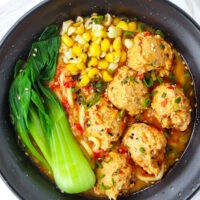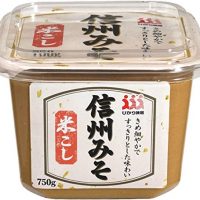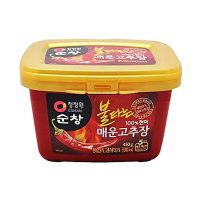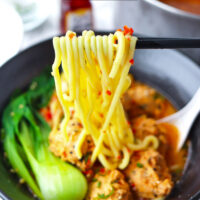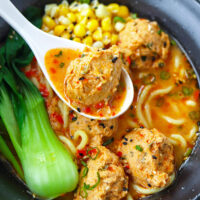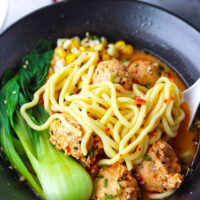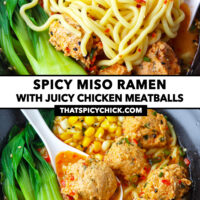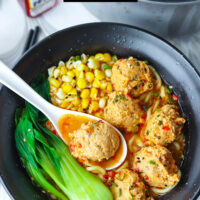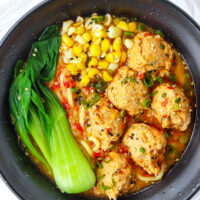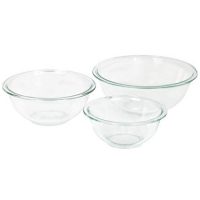 Buy Now →
Buy Now → Spicy Miso Ramen with Chicken Meatballs
Juicy chicken meatballs, slippery and hearty ramen noodles, and an EPIC tasty miso broth that’s super flavorful and warming! It’s ready in just 35 minutes and so delicious on any given weeknight!
- Prep Time: 15
- Cook Time: 20
- Total Time: 35 minutes
- Yield: 3 1x
- Category: Dinner
- Method: Simmer
- Cuisine: Asian-inspired
Ingredients
Scale
For the Chicken Meatballs:
- 2 Garlic cloves – grated
- ½ TBLS grated Ginger
- 2 Asian Red Shallots – finely chopped
- 2 TBLS finely chopped Coriander (Cilantro)
- 2 TBLS Spring Onion – finely chopped
- 8.5 ounces / 240 grams Ground Chicken
- 1 TBLS Low Sodium Light Soy Sauce
- 1 TBLS Gochujang (Korean Hot Pepper Paste)
- ½ TBLS Korean Sake (or Japanese Sake)
- ¼ TSP Kosher Salt (use half the amount if using iodized table salt)
- ¼ – ½ TSP freshly cracked Black Pepper
- 1 TSP Sesame Oil
For the Spicy Miso Ramen Broth:
- 1 Asian Red Shallot – finely chopped
- 1 Spring Onion (Scallion/Green Onion) – finely chopped, white and green parts separated
- 2 Garlic Cloves – minced
- ½ TBLS grated Ginger
- 2–10 fresh Red Chilies (optional), to taste – finely chopped
- ½ TBLS White Miso Paste
- 1.5 TBLS Creamy (Smooth) Peanut Butter
- 1.5 TBLS Gochujang
- 1 TBLS Low Sodium Light Soy Sauce
- 1 cup / 237ml Warm Water
- 1 TBLS Canola Oil (or any other neutral cooking oil)
- ½ TBLS Pure Chili Oil (optional)
- 2 cups / 500ml Chicken Broth (or Pork Bone Broth)
- ½ cup / 118ml Whole Milk
To Assemble the Noodle Bowls:
- 320 grams/11.28 ounces Ramen Noodles (I used 2 vacuum sealed packs of fresh ramen noodles– see notes*)
- 3–4 pieces blanched Bok Choy (or other Asian greens such as choy sum, Chinese Broccoli, etc.)
- ¾ cup blanched Sweet Corn Kernels (optional – fresh, frozen, or canned)
- Reserved Spring Onion Green Parts
- Sesame Oil, for drizzling
- Pure Chili Oil (optional), for drizzling
- Toasted White and Black Sesame Seeds
Instructions
- Mix the chicken meatballs ingredients: Finely chop/grate the garlic, ginger, Asian red shallots, coriander, and spring onion as indicated in the ‘ingredients’ section. Combine the ground chicken, chopped aromatics and herbs, low sodium light soy sauce, gochujang, Korean sake, black pepper, kosher salt, and sesame oil in a medium-sized mixing bowl. Mix well to combine. Lift the meat mixture up with a large spoon (or using your hands) and drop it so that it slaps against the bowl. Repeat a few times until everything is smooth and combined well. Set aside.
- Prepare the fresh ingredients for the broth: Finely chop the Asian red shallot, spring onion (separate the white and light green parts from the dark green parts), garlic, red chilies, and grate the ginger.
- Make the sauce: Combine the white miso paste, peanut butter, gochujang, low sodium light soy sauce, and warm water in a large heatproof measuring glass. Mix thoroughly until the pastes have broken down and everything is combined well.
- Make the spicy miso soup: Heat 1 tablespoon canola oil and half tablespoon pure chili oil (if using) in a medium-sized stockpot over medium-high heat. Once hot, add the shallot and spring onion white and light green parts. Sauté for 20-30 seconds until slightly softened. Add the garlic, ginger, and fresh red chilies and sauté for another 20 seconds until fragrant. Pour in the chicken broth and sauce mixture, stir to combine. Then gradually pour in the whole milk while stirring until evenly combined. Let the broth heat up for about 3-5 minutes (it should not be boiling). Then turn the heat down to medium. Use a teaspoon to scoop up the chicken mixture and another teaspoon to slide if off the first one and into the broth. Repeat with the remaining chicken mixture until all of the meatballs are in the broth. Allow the meatballs to cook in the soup for 2-3 minutes, until they’re just cooked through. Taste the soup and add kosher salt if needed. Switch off the heat and cover to keep warm.
- Cook the noodles and veggie toppings: Bring water to a boil in another small saucepot. Add the ramen noodles and cook according to package instructions. During the last 30 seconds of cooking, add the bok choy to the pot and blanch briefly. Drain and divide the noodles and bok choy evenly into three bowls. If using fresh or frozen sweet corn kernels, add water to the pot again and bring to a boil. Add the sweet corn kernels and blanch for 1-2 minutes. Drain into a fine mesh strainer and run cold water over the corn kernals to “shock” them and prevent from cooking further. (Drain only if using canned corn.)
- To Serve: Ladle the spicy miso broth evenly the noodles in the bowls and top with the bok choy, sweet corn, and reserved spring onion dark green parts. Drizzle with sesame oil and pure chili oil if desired and sprinkle with toasted white and black sesame seeds. Serve immediately.
Notes
- Ramen varieties. If using dried instant ramen bricks, discard the seasoning packet (if it comes with one) and boil as per package instructions. You’ll need two bricks of ramen noodles. If using dried ramen noodle sticks, use 5.65 ounces / 160 grams and cook as per package instructions before assembling the noodle bowls.
- White miso paste. Known as shiro miso or kome miso, this fermented Japanese soybean paste adds savory umami notes and a mild nutty sweetness to the soup. Look for it in a regular or Asian supermarket or a specialty Japanese ingredients grocery store. I do not recommend using a red miso paste as it saltier and may overpower the ramen broth.
- Gochujang. Gochujang is a fermented Korean chili pepper paste that’s spicy-sweet and smoky flavored. It comes in small tubs and can be found in the Asian aisle most mainstream supermarkets and in Asian and Korean supermarkets.
- Optional toppings. Apart from the toppings listed above, you can also top your ramen noodle bowls with other veggies like sliced cooked shiitake mushrooms, blanched snow peas or sugar snaps, fresh mung bean sprouts, etc. You can also top with half of a soft boiled egg for each bowl and crushed red pepper flakes for more heat if desired.
- Storing leftovers. Ideally, this ramen is best eaten immediately after cooking. There is risk of the milk splitting when reheating the leftover soup unless you are using full-fat coconut milk. That being said, you can store the soup in a sealed airtight container in the fridge for up to 2 days if needed. Cook the noodles when ready to serve and reheat the broth over medium heat in a pot on the stovetop until hot throughout. Be careful to not let the broth boil rapidly when reheating. Do not store the noodles and soup together in the fridge as the noodles will absorb the soup and bloat over time.
- See ‘Variations’ section in the post above if you’d like to customize this spicy miso ramen.
Nutrition
- Serving Size: 1 bowl
- Calories: 565
- Sugar: 16.9g
- Sodium: 1830.4mg
- Fat: 21.7g
- Saturated Fat: 4.5g
- Unsaturated Fat: 15.5g
- Trans Fat: 0.9g
- Carbohydrates: 66.8g
- Fiber: 5.7g
- Protein: 29.9g
- Cholesterol: 72.9mg
